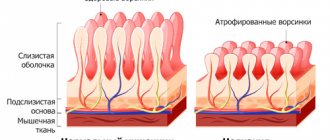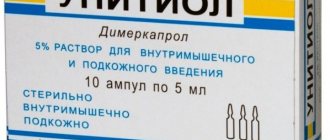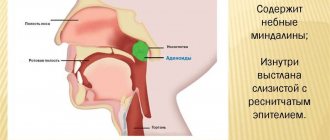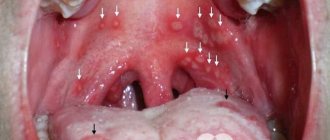Most of us have experienced food poisoning at least once in our lives. Food poisoning is caused by bacteria or toxins found in food. The most obvious symptoms of food poisoning are: nausea, vomiting, headache, dizziness, abdominal cramps and diarrhea. Food poisoning should not be ignored, but it is better to take immediate measures that are effective against food poisoning.
It is worth remembering that if food poisoning has already occurred, the person will lose more fluid than usual. Try to provide yourself with drink. You should drink at least eight glasses of water throughout the day during food poisoning. Water helps get rid of toxins and bacteria that cause food poisoning. In addition to water, you can also drink diluted fruit juice or broth. You can also immediately begin treating food poisoning at home using readily available, simple ingredients found in your kitchen .
In addition, you should definitely consult a doctor, especially if the consequences of food poisoning include severe diarrhea, vomiting, dizziness or dehydration.
Ten effective remedies to combat food poisoning at home:
Ginger
Ginger is an excellent home remedy for treating almost all types of digestive problems, including those associated with food poisoning.
- You can drink one cup of ginger tea after eating lunch or dinner to stop heartburn, nausea and other symptoms associated with food poisoning. To make ginger tea, dissolve one teaspoon of grated ginger in a cup of hot water, let it brew for a few minutes, and add sugar to taste.
- Add a few drops of ginger juice to one teaspoon of honey and take several times a day to reduce inflammation and pain.
- Eating raw ginger increases the acid levels in the stomach, which will help digest food faster.
How long does it take for symptoms to appear?
The main cause of food poisoning is harmful bacteria that enter the stomach and intestines. They live on dirty hands, unwashed fruits, vegetables and other unprocessed foods. Disorders can manifest themselves chronically or acutely.
Pathogenic bacteria
This type of pathogen begins its active action immediately after entering the beneficial environment in the intestines. Bacterial microorganisms multiply and release toxic substances into the body. How quickly the first symptom appears depends on three factors: the type of bacteria, the body's immune system and the amount of dangerous food eaten. The following foods contribute to the rapid proliferation of microorganisms: fish, meat, fruits, offal, vegetables, chicken eggs. If you eat it unprocessed or insufficiently processed, the risk of intoxication is high. Elderly people and young children are especially susceptible to infection.
How long does it take for food poisoning to appear?
- Salmonella appears a day after entering the body. The patient complains of diarrhea and vomiting, he has a fever up to 40 degrees and headaches. Failure to provide timely medical care leads to death.
- Botulism. The danger lies in canned foods. The disease is fatal and causes impairment of vision, respiratory and swallowing function. It can manifest itself in up to a day. Proper treatment allows the victim to fully recover.
- Shiggelosis. Microorganism that reproduces in raw milk. The time period before the development of the first symptoms is 1-7 days.
- Staphylococcus aureus and E. coli are common inhabitants of meat. Symptoms develop quickly: from 30 minutes to 24 hours.
There are other causative agents of food poisoning, but they are the least dangerous and are much less common.
Bacterial poisoning
Intoxication occurs from food poisoning containing E. coli or staphylococcus. The patient may feel unwell and vomit within 30 minutes to 1 hour after eating spoiled food.
We recommend reading
- Further treatment of cottage cheese poisoning
- Rules for conducting and deciphering a blood test for botulism
- Symptoms of intoxication syndrome and incubation period
Main symptoms:
- trembling, chills,
- weakness in the body, a sharp deterioration in health,
- increased body temperature,
- vomiting, attacks of nausea,
- painful stomach cramps,
- hypotension,
- diarrhea.
Treatment started in the first hours of the disease helps improve the patient’s condition after one day.
The danger is posed by stale fish, meat and dishes prepared in violation of technology and sanitary standards. Toxic poisoning can be obtained from consuming milt, caviar and liver of the perch family, beluga, and pike caught during the spawning season.
If the food has been poisoned by salmonella, the acute period may begin in the first 24 hours:
- increased body temperature,
- diarrhea,
- vomiting, nausea,
- painful spasms in the stomach and intestines,
- headache.
This type of poisoning is dangerous because it can cause dehydration. Lack of adequate treatment can lead to death.
Without medical help, botulism is the most difficult to deal with. The onset of the disease is noted in the first hours and manifests itself in:
- body aches,
- difficulty swallowing,
- breathing and vision problems.
The Shigella bacterium causes disturbances 1-7 days after the microorganism enters the stomach. The time of onset of the disease depends on the body’s defenses and the rate of reproduction of the pest.
Symptomatic picture:
- weakness in joints and muscles,
- heat,
- migraine,
- frequent diarrhea (possible blood clots in the stool),
- lack of appetite.
In severe cases, convulsions may occur, accompanied by loss of consciousness.
Laboratory tests are performed to make a diagnosis.
Treatment of bacterial food intoxication is carried out in a hospital.
Non-bacterial poisoning
The culprit of poisoning is not bad food, but the accidental consumption of chemicals and toxins. Chemicals are found in mercury, nitrates, chlorine, and toxins are found in mushrooms and plants. The most severe symptoms are observed due to ingestion of fly agaric and toadstool. After 4 hours, severe diarrhea appears. Then the patient gets better and his condition stabilizes. After 2-3 days, the skin turns yellow and fever begins. Laboratory tests reveal a sharp drop in glucose levels.
Lack of timely medical care can lead to death due to the development of liver and kidney failure.
Drug poisoning can occur after 30 minutes or 3 hours. The time for development of the clinical picture depends on the drug. The first symptom is clouded consciousness.
Taking an increased dose of medications to lower blood pressure manifests itself after 60 minutes in blurred vision, a critical decrease in blood pressure, slow heartbeat, and loss of coordination. Failure to provide assistance leads to the death of a person after 6-12 hours.
An adult must know that there is no need to take paracetamol and alcoholic beverages together! A dangerous “cocktail” threatens the development of aggressive hepatitis. Intoxication develops after 2-5 hours.
Alcohol poisoning is common in this category. The severity of toxic effects depends on the circumstances of drinking alcohol with food or on an empty stomach. If you are poisoned on an empty stomach, toxins will appear in the blood after half an hour. In combination with food after 1.5-2 hours.
Intoxication can begin with vomiting, then the person becomes aggressive, his coordination of movements is impaired and loss of consciousness is possible. With a high concentration of toxin in the blood (over 4%), death occurs.
Nitrates are dangerous substances. They enter the diet along with unwashed vegetables and fruits that were previously treated with chemical fertilizers. The largest amounts contain: turnips, rutabaga, radishes and Brussels sprouts.
What information is missing from the article?
- List of effective medications
- A detailed overview of traditional methods of treatment
- Professional opinion of a specialist
- Detailed review of antidotes
Apple cider vinegar for food poisoning
Apple cider vinegar has an alkaline effect on the body, just as it does in normal metabolism. Consuming apple cider vinegar can help relieve various symptoms of food poisoning. It can also soothe the gastrointestinal tract and kill bacteria, providing instant relief.
- Simply mix two tablespoons of apple cider vinegar in a glass of hot water and drink on an empty stomach to prevent acid indigestion.
- Alternatively, you can drink two tablespoons of undiluted apple cider vinegar.
Main causes of poisoning
The cause of intoxication is harmful microorganisms and viruses. Poisoning can be caused by poor quality or spoiled food.
You can become infected as a result of the following circumstances:
- Consumption of pork, beef, and game meat that has not undergone proper temperature treatment.
- Storing products in non-compliance with established standards. This is especially true for quickly perishable products.
- Storing food outside of refrigeration units for a long time.
- Infection by contact, through unwashed hands.
- Cross contamination.
Particular attention should be paid to so-called cross-contamination. This cause of acute intoxication is most often overlooked. For example, when meat is cut on one board, and then vegetables are cut on the same board, thus pathogenic bacteria get from the board into the chopped vegetables for salad.
This type of contamination is also possible when uncooked meat is stored with cooked food. In this case, the cooked food becomes infected with pathogenic bacteria, which contribute to the development of intestinal poisoning. The following bacteria are responsible for intoxication of the body:
Lemon
Lemon has long been known for its anti-inflammatory, antiviral and antibacterial properties. Citric acid also helps kill bacteria that cause food poisoning.
- Just add a pinch of sugar to one teaspoon of lemon juice and drink it two to three times a day.
- You can also mix warm water with lemon juice to cleanse your body with this drink.
Food poisoning: diet and basic principles of nutrition
When a food infection occurs, unpleasant symptoms such as diarrhea and vomiting occur. Most often they are uncontrollable, so the task of the diet is to restore normal water and electrolyte balance and eliminate dehydration.
Basic principles of nutrition for intoxication of the digestive system:
- Drink and drink again - this is the main rule in case of food poisoning. This is necessary to prevent dehydration and remove toxins from the body. But you need to drink in small quantities, because a glass of water drunk in one gulp can provoke vomiting;
- Nutrition should be balanced. There should be a certain period of time between meals. You need to eat often and in small portions; split meals are ideal: 5-6 meals per day. Small portions give the body a break so that it has time not only to digest food, but also to heal the gastric mucosa, which is terribly irritated after poisoning;
- There should be no fried or overly salty dishes. Everything should be boiled or steamed;
- As for salt, the conversation is separate. Its use should be completely limited or minimized: 5-6 grams per day, no more. Too salty food will significantly impede the rapid restoration of the mucous membrane;
- Too cold or hot food can cause vomiting, so the dish must be served warm, slightly cooled.
The diet can last about a week, and the return to normal nutrition occurs gradually.
Allowed foods for food poisoning:
- compotes, jelly, fruit drinks made from jam or berries;
- meat and fish broths;
- tender meat, such as chicken breast, rabbit meat;
- cutlets, but the minced meat should be rolled twice, or even three times;
- porridge from buckwheat, oatmeal, rice;
- milk or cottage cheese with low fat content;
- It is allowed to drink juice, but it must be diluted with water in a ratio of 1 to 1;
- croutons (made from bread);
- crackers, preferably without raisins;
- You also need to remember about vitamins, so ascorbic acid is also allowed in small quantities.
Prohibited foods for food poisoning:
- buns, cookies, bread;
- semi-finished products and snacks in catering establishments are strictly prohibited;
- flavored tea, cocoa or coffee;
- mayonnaise, mustard, ketchup;
- vegetables and fruits are also not advisable to eat;
- fatty, difficult to digest meat;
- dried, smoked fish;
- cheese, milk, sour cream;
- seeds, chips, crackers;
- ice cream;
- sausage and ham.
Diet for food poisoning is the main method of treatment. By following the correct diet, with all the prohibitions, you can avoid consequences such as dysbiosis of the food tract and food allergies.
Due to non-compliance with the diet, there is a risk of gastritis.
Basil for food poisoning
Basil is an herb that can eliminate infections caused by food poisoning. There are several ways to use basil in the treatment of food poisoning.
- Drink basil juice with a tablespoon of honey several times a day.
- Add a few drops of basil oil to one liter of drinking water. Drink this water slowly throughout the day to kill bacteria that can cause stomach pain and other problems.
- Add basil leaves, a little sea salt and a pinch of black pepper, mixing with three tablespoons of yogurt. Eat this three to four times a day until the symptoms of food poisoning go away.
Subscribe to our YouTube channel!
Causes of food poisoning
The causes of food poisoning are quite simple - food. However, it can be quite difficult to determine which product caused it.
Along with food, bacteria and microbes enter the human body, which, in fact, cause poisoning. In addition, food poisoning is often caused by toxic chemicals contained in foods.
Let's figure out which foods are the easiest to poison:
- Fruits and vegetables. These products can be classified as the highest risk group in terms of the frequency of poisoning. Poisoning occurs especially often in the summer. These products contain residues of chemical compounds and fertilizers that we used to grow them (toxic chemicals, pesticides). Sometimes the cause of poisoning can be their improper storage. From the heat, vegetables and fruits spoil very quickly and become a source of dangerous bacteria and microorganisms, which, when they enter our body, cause poisoning;
- Meat. First of all, meat can cause poisoning if stored or cooked incorrectly. If meat is stored improperly (for example, outside the refrigerator), pathogenic microbes multiply very quickly. This is especially true for chicken meat;
- Fish. Eating rotten or low-quality fish can often cause food poisoning. Here it is important to follow the rules for storing fish, and it also does not hurt to know the technology for preparing this product (for example, smoked fish). It is important to know that during the decomposition process, very toxic substances are released from fish, which can cause not only poisoning, but also cancer;
- Mushrooms. Food poisoning from mushrooms is one of the most severe. Sometimes the count is literally minutes. Unfortunately, it happens that mushroom poisoning leads to death. This often comes from ignorance of the types of mushrooms. The fact is that many poisonous mushrooms are very similar in appearance to edible ones. And it’s quite easy to make a mistake, especially without deep knowledge in this area. However, even edible mushrooms can cause poisoning if collected in environmentally unfavorable areas. For example, near large manufacturing plants, railways or highways;
- Milk and dairy products. When dairy and fermented milk products are stored outside the refrigerator for a long time, they become a source of staphylococcus;
- Conservation. Yes, even home-canned food prepared by a very clean housewife can cause poisoning. The fact is that there are a number of bacteria that multiply in the absence of air, that is, in a jar. Watch carefully, and if you see that the lid of the jar on the inside is rusted or swollen, do not eat the food;
- Products of non-plant origin. The main danger here lies in the incorrect manufacturing technology of such products, as well as in improper storage. Violation of the integrity of the packaging, expired expiration date, use of low-quality raw materials - all this makes the use of these products quite a risky activity.
Now I would like to dwell in a little more detail on the rules for storing food. After all, most often it is we who break this rule. Remember how often you forgot to put borscht or soup in the refrigerator in the summer? What about the salad we leave on the table instead of putting it in the refrigerator? All this creates ideal conditions for the development of pathogens in food, which ultimately lead to food poisoning.
Also, the cause of the disease can be a simple failure to comply with hygiene rules when cooking. You should always wash your hands before preparing food. All other factors causing poisoning simply pale in comparison with such sloppiness.
Garlic
Garlic is also very effective in fighting food poisoning due to its strong antiviral, antibacterial and antifungal properties. It relieves symptoms such as diarrhea and abdominal pain by destroying harmful microbes in the intestines.
- Eat one fresh clove of garlic with water. If you can tolerate the smell of garlic, you can also try garlic juice.
- Alternatively, you can make a mixture of garlic oil and soybean oil and rub it on your stomach after meals.
Prevention of intestinal poisoning
In order to minimize the risk of contracting an intestinal infection, it is necessary to regularly follow all the required preventive measures. Namely:
- Washing your hands not only before eating, but also after going outside;
- Purchase products only from trusted points of sale and monitor their expiration dates;
- Washing fresh vegetables and fruits with boiled water;
- Storing food products in packages to prevent their contact with flies and other insects that carry infections;
- Using a separate knife and cutting board for raw meat, fish and other products;
Besides:
It is very important that you, as a parent, respond appropriately when your child is poisoned. First, you must understand that there is a problem. Typical symptoms after eating rotten food are nausea and vomiting. The child usually also has cramps and diarrhea. Because the body needs to quickly fight germs, weakness and fever are also characteristic of food poisoning.
How to recognize food poisoning?
If these symptoms occur suddenly, you should talk to your child and bring him to the doctor immediately. In severe cases, calling emergency services may be helpful. Food poisoning causes symptoms such as diarrhea, abdominal pain, or nausea. Often the symptoms resemble the first signs of the flu. Therefore, sufferers often misjudge their situation the first time. However, food poisoning is usually harmless and symptoms resolve on their own.
- Do not store cooked food in the refrigerator for more than 3 years and, of course, do not eat slightly lost or spoiled food.
- Avoid purchasing street food and eat only in trusted cafes and restaurants.
It is especially important to follow all the above hygiene rules immediately after recovery from an intestinal infection. During this period, the body is weakened and especially susceptible to re-infection.
Principles of nutrition for food poisoning
The text contains general information only, for which accuracy cannot be guaranteed.
The colloquial term gastrointestinal flu describes inflammation of the gastrointestinal tract. The medical term for this is gastroenteritis. Despite the use of the term "flu", this disease is not related to influenza. Depending on the cause, symptoms can be very sudden and weaken the body through severe diarrhea and vomiting. At the onset of the gastrointestinal flu, sufferers usually complain of nausea or a particular loss of appetite. Prevention of intestinal infections will allow you to avoid this unpleasant disease, which has a severe course. If you suspect that children or elderly relatives have been infected with it, immediately provide them with first aid and show them to a doctor as soon as possible.
Bowel poisoning is a fairly familiar expression for most people. Intestinal poisoning, the symptoms of which are most often mistaken for signs of ordinary food poisoning, must be distinguished in order to be treated correctly. Let's discuss how to distinguish between these two diseases and what preventive measures exist that can protect a person from intestinal poisoning.
Fever occurs especially in children. Regardless of the cause, this is when the patient has more than three unbalanced bowel movements per day. often observed as a result of significantly increased bowel activity. Both types and duration of treatment depend on the severity and likely cause of the disease. Sometimes there are even more serious conditions behind the symptoms, so long-term medical evaluation is required. Immediate action is indicated in the case of a particularly severe course or the appearance of blood in the excrement.
Especially with already weakened patients and children, an otherwise harmless gastrointestinal flu can lead to complications. The reason for this is usually rapid loss of fluid and electrolytes. There are numerous causes for the so-called gastrointestinal flu. Most often, symptoms are caused by bacterial or viral infections. There is also a common connection with the consumption of spoiled food. In this case, they talk about food poisoning. If food is suspected to be the cause of inflammation, food waste and stool samples should be tested for pathogens.
Banana
Bananas are a rich source of potassium, which greatly helps reduce the various effects of food poisoning. Since bananas are very soft, they are easy on the stomach. Even just one banana will help restore your energy levels. You can simply eat a ripe banana or make a delicious and healthy banana smoothie and drink it two to three times a day.
Food poisoning: first aid
Most often, the patient is almost immediately hospitalized for first aid. But what can you do?
The first thing to do when one or more signs of food poisoning is detected: rinse the stomach. It is advisable to rinse until water begins to come out instead of vomit. A 2% soda solution is ideal, but plain water will also work. (Not from the tap, but always boiled!)
You need to drink, drink and drink again! A healthy person needs to drink up to 2 liters of water per day. A person with food intoxication needs to drink even more, up to 3 liters per day. Water helps relieve dehydration; in addition to it, you can drink rehydron or weak tea.
It is necessary to avoid heavy and difficult to digest foods. Please note that after poisoning, dysbiosis may develop (a condition in which the number of beneficial bacteria becomes smaller, and the number of harmful ones, naturally, increases).
In any case, visiting a doctor is mandatory; only he can prescribe the correct treatment and exclude the development of dangerous diseases such as botulism (a deadly disease caused by the ingestion of the exotoxin of the botulism bacillus).
Honey
Honey has both antibacterial and antifungal properties, which can be effective in treating stomach and other symptoms of food poisoning. Honey as a natural remedy can be taken in its pure form or added to tea. A teaspoon of honey taken three times a day can do wonders, such as relieving indigestion caused by food poisoning. It also controls the formation of excessive acid in the stomach.
These natural treatments will surely help relieve the symptoms of food poisoning and allow you to get instant relief. However, if symptoms of food poisoning persist, consult a doctor immediately.
Treatment of food poisoning
For mild illness, no specific treatment for poisoning is required. Within 1-3 days, if you follow a gentle diet and drink plenty of fluids, the patient’s condition returns to normal. In case of severe poisoning, treatment at home is dangerous.
Drug treatment will be more effective and will consist of the following elements.
1. Rehydration therapy as the main method of treating food poisoning. The use of rehydrants leads to the restoration of water and electrolyte deficiency in the body. Rehydration is carried out orally using Regidron, Oralit, Litrozol, Chlorazol. In severe cases or when fluid volume is restored in young children, rehydration is carried out parenterally using the drugs Lactosol, Acesol, Trisol, Chlosol, Kvartasol.
2. Sorption therapy. Enterosorbents during the period of absence of vomiting and in the intervals between taking other medications help to quickly eliminate toxins. Adsorption involves the use of the following drugs: black or white coal, Enterosgel, Smecta, Polysorb, Sorbogel, Polyphepan, etc.
Sorption therapy is not carried out at high body temperatures, and also requires maximum caution when administered to children and elderly patients.
3. Pain therapy. Food poisoning with intense pain syndrome, which is accompanied by diarrhea with a painful urge to defecate, should be treated with antispasmodics: No-Shpa, Spazgan, Drotaverine, Spazmalgon.
4. Antibacterial and antimicrobial therapy. Drugs in this group are prescribed extremely rarely, as they can aggravate the picture of dysbacteriosis along with poisoning. Antimicrobial drugs and antibiotics are prescribed for mixed poisoning (Fthalazol, Intetrix, Nifuroxazide, Ersefuril).
5. Antidiarrheal and antiemetic therapy. Due to the fact that diarrhea and vomiting are the body’s defense reactions to poisoning, you should not immediately deal with them. But in cases where these symptoms are very pronounced, the patient is prescribed antiemetic drugs (Motilium, Cerucal) and drugs for diarrhea (Loperamide, Trimebutin).
6. Antipyretic therapy. The increase in body temperature during poisoning does not reach high levels. However, some adults and children do not tolerate hypothermia well. Such patients are prescribed Ibuprofen, Ibuklin, Paracetamol.
7. Therapy that restores intestinal microflora. Food poisoning disrupts the normal intestinal biocenosis. It requires restoration with the help of the following drugs: Bifidumbacterin, Bioflor, Linex, Bionorm, Enterozermina, actisubtil.












